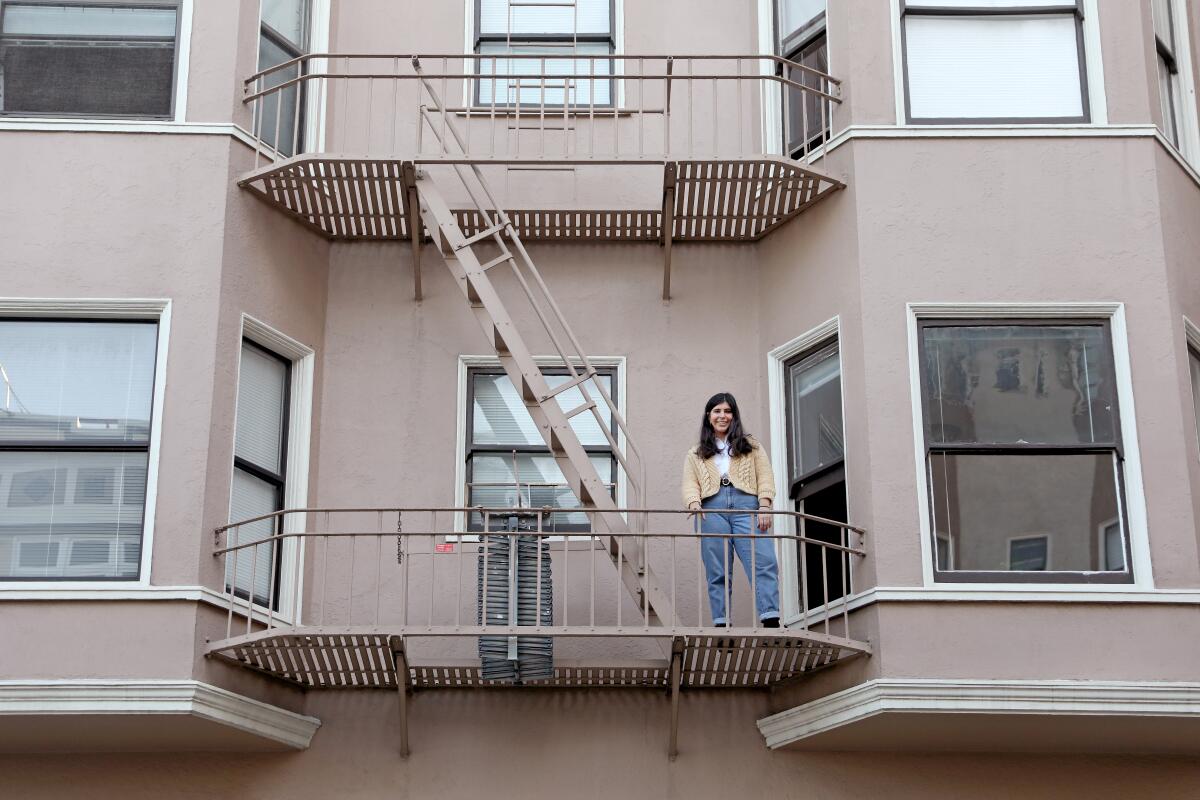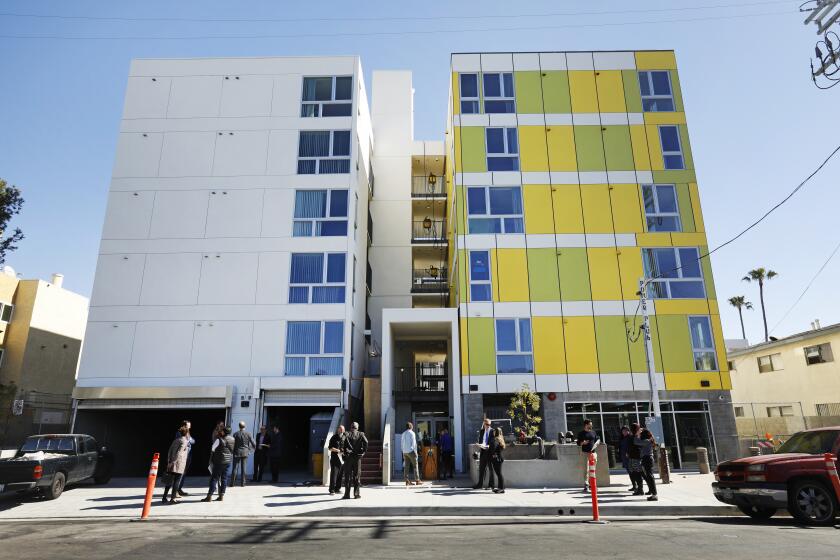Millennials can’t afford to pay rent in these California cities because of the renter wage gap

- Share via
Los Angeles, San Diego, San Francisco and three other California cities have some of the biggest millennial renter wage gaps in the country — the gap being the difference between what the typical worker can afford versus the average rental costs.
Of the California cities, L.A. has the biggest rent wage gap for millennials, followed by San Diego in third place, San Francisco in fifth, San Jose in seventh, Riverside in eighth and Sacramento in 12th, according to an analysis by the air filter company Filterbuy using data from the U.S. Census Bureau’s 2020 American Community Survey Public Use Microdata Sample.
In L.A., the millennial wage gap was minus 49.5% in 2020, with millennial renters making a median wage of $36,649, according to the analysis. However, renters needed an average wage of $72,560 to pay for a one-bedroom rental. The median rent for a one-bedroom place was about $1,814; about 35.6% of millennials in the city were renters.
San Diego also had a lofty millennial renter wage gap at minus 39.9%. The average wage millennials would need to make in order to afford a one-bedroom abode was $69,720, even though the renter median wage was $41,885. In San Diego, 34.2% of millennials were renters.
Meanwhile, Riverside’s millennial renter wage gap was minus 34.5%, with millennials having to make an average of $47,960 to pay for a one-bedroom unit. In actuality, they made a median wage of $31,414.
When developers build affordable housing in a luxury complex like the Grand LA, the units are added to a regional pool that are rented out by lottery.
Researchers calculated the millennial renter wage gap by finding the percentage difference between the median wage required to afford a one-bedroom unit without spending more than 30% of the wages on rent and the actual median wage for millennial renters in the area. Millennials were defined as those 24 to 39 years old in 2020.
While rental prices declined sharply during the height of the pandemic, California’s rents have been rising amid a hot real estate market, causing some cities to enact rent control protections to prevent people from being priced out of their homes.
Some California landlords were allowed to bump up their rent starting Aug. 1 by as much as 10%, the maximum annual increase under Assembly Bill 1482, a statewide law passed three years ago. But the 10% cap applies only to complexes built before 2007 and those not subjected to rent control restrictions, meaning that other landlords can raise their rents even higher.
Rent control protections and AB 1482 also don’t prevent California landlords from increasing rent prices once a previous tenant moves out. Under the 1995 Costa-Hawkins Rental Housing Act, rent control was barred for condos, single-family homes and buildings built after 1995. It also prohibits “vacancy control,” allowing landlords to raise the rent to market prices every time a new tenant moves in.
Data from the Bureau of Labor Statistics’ consumer price index for the Los Angeles area showed that in July, housing costs were up 5.3% from the year before and renters were spending 4.3% more for their primary residence compared with July 2021.
Rent has gone up overall across the U.S. According to the consumer price index for urban customers, the rent index increased 0.7% in July across 75 U.S. urban areas. The CPI was calculated using monthly prices for 6,000 housing units and 22,000 retail establishments.
Economically speaking, the vibes are off. Here’s what you should be doing with your money, according to financial experts.
After prices went down during the pandemic, the housing market heated up in 2021, resulting in a drop in the vacancy rate to 5.8%, the lowest since the 1980s, according to a report from Harvard University’s Joint Center for Housing Studies earlier this year.
The report also found that low-income renters, especially those of color, were hardest hit by losses of income during the pandemic and the spike in rents. About a quarter of Black renters and 19% of Latino renters were behind on rent in the third quarter of 2021, compared with 9% of white renter households.
In California, rental housing is dominated by single-family zoning, preventing the construction of more multifamily housing and renters from residing in many neighborhoods. The number of affordable housing units has also been shrinking, with the number of units costing less than $600 a month dropping by 3.9 million from 2011to 2019, according to the Harvard report.
At the same time, wages haven’t increased enough for millennials to make enough for rent.
The federal minimum wage hasn’t been raised in more than a decade, since it last went up to $7.25 an hour in 2009. Democrats have supported the Raise the Wage Act, which would increase the federal minimum wage to $15, although the legislation has been stalled in Congress since it was introduced in 2021.
Labor advocates, however, argue that $15 an hour is not enough to address the rise in overall costs.
If you’re like most people in Southern California, you live in a rental.
Shanti Singh, a spokesperson for statewide renter advocacy group Tenants Together, also pointed to Proposition 13, which has strictly limited property tax hikes since 1978, as another reason millennials have been disproportionately affected as renters.
“We have a weird system of how we tax property and transfer wealth through homeownership that millennials are locked out of because of Proposition 13,” she said. “We have laws like Costa-Hawkins and vacancy de-control that puts targets on our backs because landlords are trying to get us out. And then there’s the difference in generational stability compared to [baby] boomers, that’s true for all of America.”
Nearly 17 million Californians, about 44% of the state’s population, are renters, but Singh said renters are under-reported in government.
“We have a massive constituency that has no representation at all,” she said. “Millennials are disproportionately renters the same way people of color or single parents are disproportionately renters. I think it’s related to the way we prioritize the interests of property owners in both parties and we don’t make decisions for renters.”
More to Read
Sign up for Essential California
The most important California stories and recommendations in your inbox every morning.
You may occasionally receive promotional content from the Los Angeles Times.














